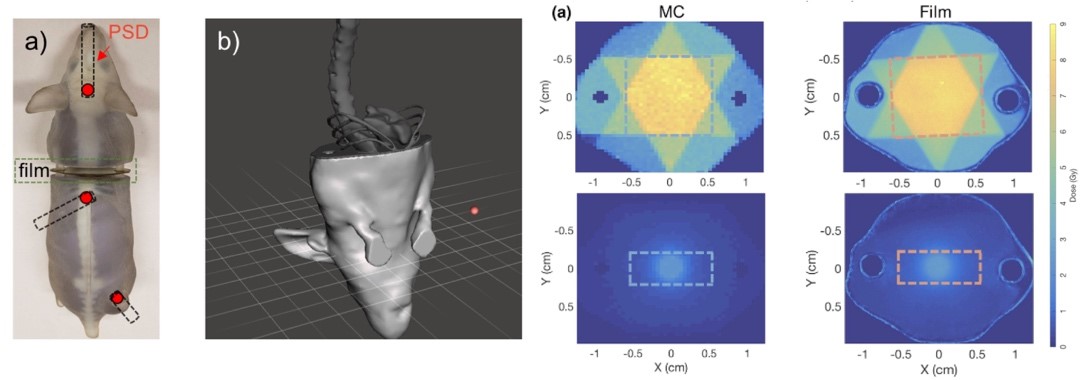Small animal radiotherapy
We are interested in improvements of dose delivery accuracy performed with image-guided small animal irradiators, such as with the small animal radiation research platform (SARRP) by Xstrahl, Inc and the small animal radiotherapy (SmART) system by PXi. To this end, we have performed a multi-institutional study on the image quality and guidance of the two systems. In collaboration with Oxford and Xstrahl, we have developed and evaluated a 3D-printed phantom for small animal image quality and targeting assessment.

We have also designed a 3D-printed phantom for evaluation of dosimetry. This phantom was built based on a microCT scan of a mouse with a subcutaneous tumor on its right hind leg. The phantom was 3D printed with two different materials mimicking soft tissue and bone. The bone material was only slightly different than the soft tissue material and provided mainly visual contrast rather than CT contrast. The lungs were excavated and filled with polystyrene to mimic lung tissue.

The phantom was equipped with two different dosimeters to enable dose measurements that was tested with a number of treatment scenarios on the SARRP.The phantom was split into two pieces in order to allow for an insertion of a laser-cut Gafchromic film for measurements of 2D doses. Dose distributions measured by the film agreed well with Monte Carlo calculated doses. Additionally, three holes in the brain, abdomen and in the orthotopic tumors were included in the model for the insertion of a plastic scintillator dosimeter (PSD). Thanks to our collaboration with François Therriault-Proulx of MedScint and Luc Beaulieu of Laval University we were able to evaluate the use of their PSD to small animal radiotherapy. We then used it for dose evaluation in these three sites for various treatment setups and found a good agreement with Monte Carlo simulations.
People
Magdalena Bazalova-Carter
